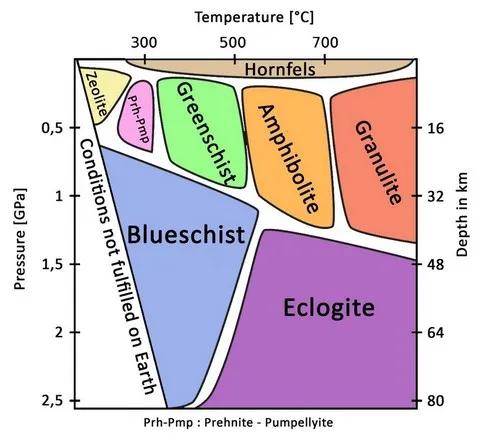What is the metamorphism in geology ?
Metamorphism : definition
We usually distinguish :
General (or regional) metamorphism
Metamorphism has different degrees of intensity, assessed according to the nature of the minerals that appear. The following mineralogical facies are thus defined by increasing intensity : facies of zeolites, green schists, amphibolites and granulites.
The terrains of regional metamorphism are divided into zones of increasing intensities (anchizone, epizone, mesozone, catazone and ultrazone), separated by metamorphic isogrades, generally named after the name of the mineral which appears at a given metamorphism intensity.
The rocks of regional metamorphism are very numerous and depend on the nature of the initial rock and the intensity of the metamorphism. The most common are schists,mica-schists, gneisses, granulites, quartzites (in part), amphibolites, pyroxenites, marbles, etc...
Contact metamorphism
The rocks present in the contact metamorphism halos depend to a large extent on the initial material and can therefore be of various types. In the case of an initial rock (protolith) silico-aluminous (clays, schists...), the rocks grouped under the name of speckled schists and hornfels, will develop andalusite and cordierite ; in the case of an initial carbonate rock, the rocks formed will be essentially marbles. Skarns are a special case of hornfels developed at the expense of carbonate rocks ; often rich in metallic elements (Cu, W, Au, etc...), they can constitute deposits of these metals.
Thermal metamorphism also appears over a few centimeters at the base of lava flows or at the edges of veins of magmatic rocks.

